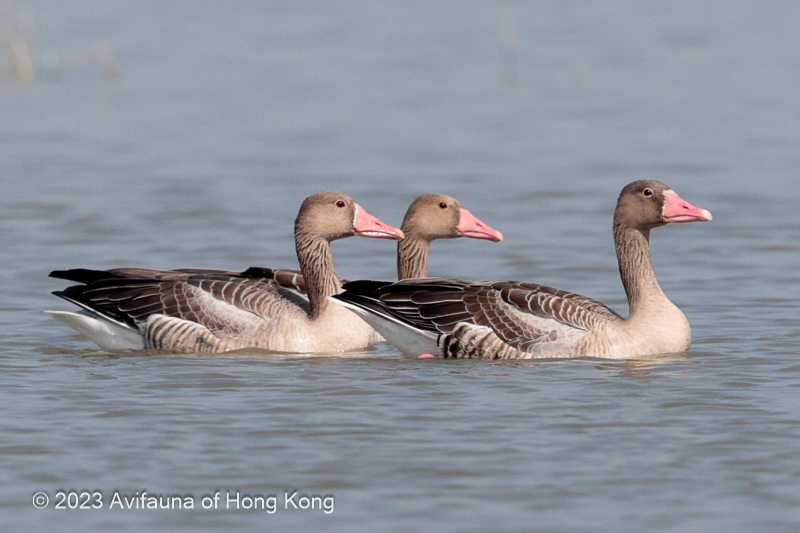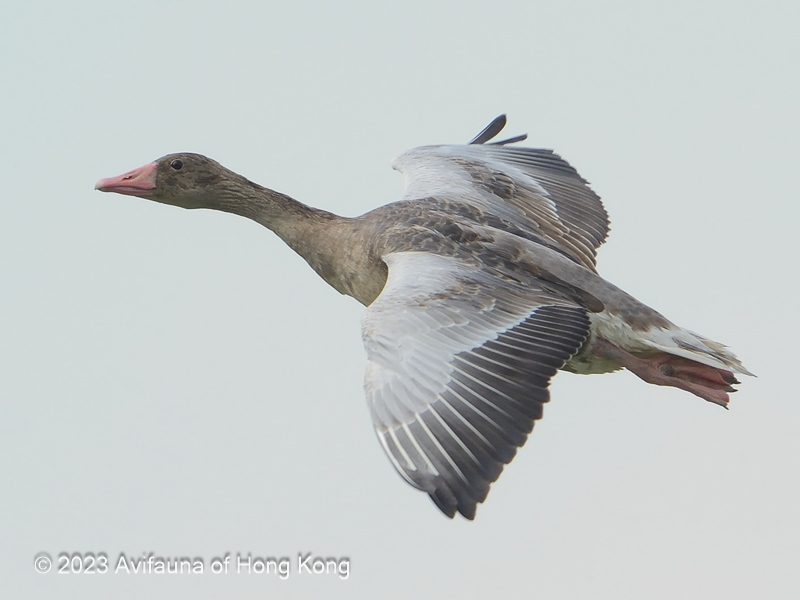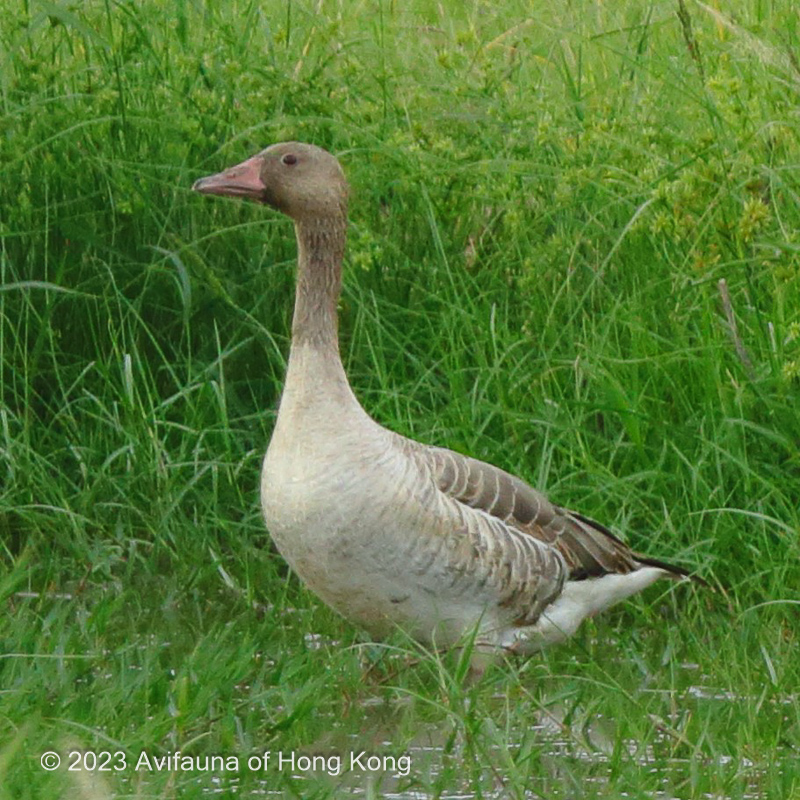Greylag Goose Anser anser 灰雁
Category I. Rare winter visitor to Deep Bay wetlands.
IDENTIFICATION

Oct. 2022, John and Jemi Holmes.
76-89 cm. Large with thick neck and heavy pink bill. Relatively plain goose without obviously darker head.

Aug. 2014, Kinni Ho.
In flight pale grey fore part of upperwing and pale grey rump contrast with darker hindwing, neck and mantle.

Dec. 2018, Paul Tsui. Juvenile.
Juveniles have dull bill and lack obvious dark marks on the belly.
VOCALISATIONS
A variety of rather loud and nasal ‘domestic goose’ type calls.
DISTRIBUTION & HABITAT PREFERENCE
All records have occurred in the Deep Bay area, either in the intertidal area or at Mai Po NR.
OCCURRENCE
There are eight records, largely in the period 6 November to 22 March.
1958: two in Deep Bay on 23 November.
1964: two at Ping Shan on 22 March.
1993: six at Tsim Bei Tsui on 6 November.
1997: five in Deep Bay on 11 January.
2012: one at Mai Po NR during 20-21 July.
2014: singles at Mai Po NR on 23 August and 21 December (the latter a juvenile).
2018: a juvenile at Mai Po NR during 3-4 December.
The possibility that the midsummer records in 2012 and 2014 involved an ex-captive individual cannot be excluded.
Vaughan and Jones (1913) stated that Greylag Geese occurred every winter in small flocks in the Pearl River Delta, usually arriving in November and December and departing in March. Herklots (1967) stated that ‘…a few geese are shot each winter in the Deep Bay marshes; all, I believe, are of this species [though] there are few authenticated records...’
RANGE & SYSTEMATICS
Greylag Goose breeds from Iceland, northwest, north and eastern Europe east across Russia, Central Asia, Mongolia and northwest and northeast China to Ussuriland. Generally, winters south of the breeding areas in Europe, while eastern populations move further south to an area stretching from Iran and Pakistan east through northern parts of the subcontinent to south China (Carboneras and Kirwan 2020). In China breeds in the northwest and northeast provinces and winters in the lower and middle reaches of the Yangtze floodplain, the Yunnan-Guizhou Plateau and both south and east China (Liu and Chen 2020). Based on HK records, it would appear to be relatively uncommon on the south coast.
The taxon occurring in HK is A. a. rubirostris, which breeds from east central Europe to China. Two other subspecies are recognised, both in Europe.
CONSERVATION STATUS
IUCN: Least Concern. Population trend increasing.
Carboneras, C. and G. M. Kirwan (2020). Graylag Goose (Anser anser), version 1.0. In Birds of the World (J. del Hoyo, A. Elliott, J. Sargatal, D. A. Christie, and E. de Juana, Editors). Cornell Lab of Ornithology, Ithaca, NY, USA. https://doi.org/10.2173/bow.gragoo.01
Herklots, G. A. C. (1967). Hong Kong Birds (2nd ed.). South China Morning Post, Hong Kong.
Liu, Y. and Y. H. Chen (eds) (2020). The CNG Field Guide to the Birds of China (in Chinese). Hunan Science and Technology Publication House, Changsha.
Vaughan, R. E. and K. H. Jones (1913). The birds of Hong Kong, Macao and the West River or Si Kiang in South-East China, with special reference to their nidification and seasonal movements. Ibis 1913: 17-76, 163-201, 351-384.

